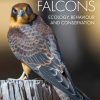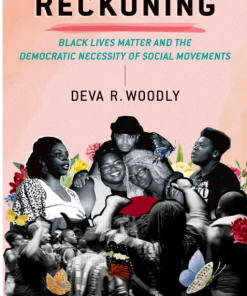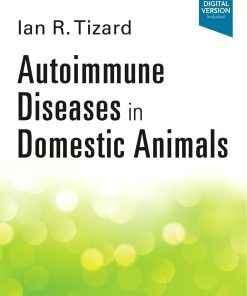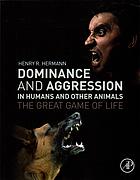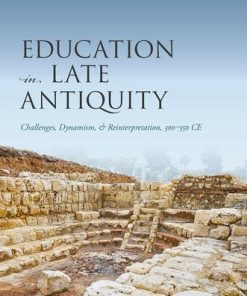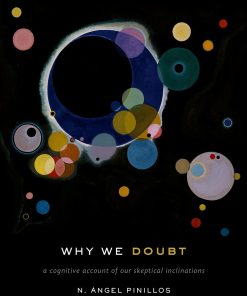(Ebook PDF) Ethnozoology Animals in Our Lives 1st edition by Romulo Romeu Nobrega Alves, Ulysses Paulino Albuquerque 0128099143 9780128099148 full chapters
$50.00 Original price was: $50.00.$25.00Current price is: $25.00.
Ethnozoology Animals in Our Lives 1st edition by Romulo Romeu Nobrega Alves, Ulysses Paulino Albuquerque 0128099143 9780128099148 – Ebook PDF Instant Download/DeliveryISBN:
Full dowload Ethnozoology Animals in Our Lives 1st edition after payment.
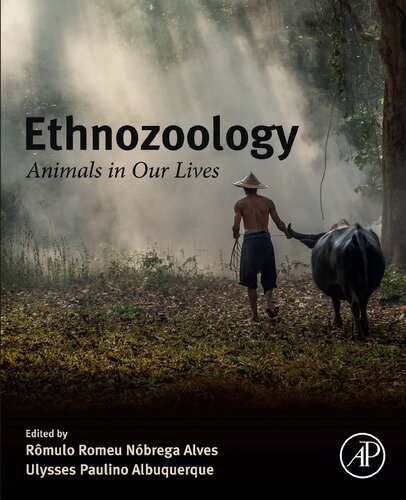
Product details:
ISBN-10 : 0128099143
ISBN-13 : 9780128099148
Author: Romulo Romeu Nobrega Alves, Ulysses Paulino Albuquerque
Ethnozoology: Animals In Our Lives represents the first book about this discipline, providing a discussion on key themes on human-animal interactions and their implications, along with recent major advances in research.
Humans share the world with a bewildering variety of other animals, and have interacted with them in different ways. This variety of interactions (both past and present) is investigated through ethnozoology, which is a hybrid discipline structured with elements from both the natural and social sciences, as it seeks to understand how humans have perceived and interacted with faunal resources throughout history.
Ethnozoology Animals in Our Lives 1st Table of contents:
Chapter 1. Introduction: Animals in Our Lives
Introduction
Investigating Animals and Their Interactions With Humans
Why This Book?
Chapter 2. Ethnozoology: Conceptual and Historical Aspects
Introduction
Historical Considerations About Human and Fauna Interactions
The Origin and History of Ethnozoology
Ethnozoology: What Are the Marching Orders?
Final Considerations
Chapter 3. Zooarcheology: Investigating Past Interactions Between Humans and Other Animals
Introduction
Data Quality
Taphonomic Analysis
Quantification
A Theoretical Framework
Applied Zooarcheology
Conclusion
Chapter 4. Studying Ethnozoology in Historical Documents
Introduction
Historical Records of the Relationships Between Human Society and Animals
How Can Ethnozoological Information Be Found in Historical Documents?
Investigating the Historical Implications of Human Exploitation of Fauna
Whaling in Brazil
Reflection on Historical Ethnozoology
Chapter 5. Imaginary Zoology: Mysterious Fauna in the Reports of Ancient Travelers and Chroniclers
Introduction
A Garden in the Orient
Something More in Song of the Muses
The Gifts of the Nile
A World of Imagination and Fantasy
A Look at Paradise
Chapter 6. Ethnotaxomy as a Methodological Tool for Studies of the Ichthyofauna and Its Conservation Implications: A Review
Introduction
Historical Aspects of Ethnotaxonomy
The Hierarchization of Ethnotaxonomy
Application of the Berlinian Model
Analogies Between Folk and Scientific Taxonomic Classification Systems
Correspondence Between Generic Folk Taxa and Scientific Species
Final Considerations
Chapter 7. The Importance of Hunting in Human Societies
Introduction
Brief History of Hunting
Motivation to Hunt: Beyond Meat
Hunting Techniques
Traps
Importance and Implications of Hunting
Final Consideration
Chapter 8. People and Fishery Resources: A Multidimensional Approach
Introduction
When Did Humans Start Fishing? A Brief Historical Introduction
Fishing and Fisheries Definitions
Fishery Resources and Their Uses
Fishery Resources as Food—And for What Else?
A Brief Overview of Fishing Gears and Techniques
Animals Used in Fisheries: An Ancient Traditional Technique Still Used Today
Fishing: Importance, Impacts, and Socio-Environmental Concerns
Ethnozoology and Its Role in Fishery Studies
Chapter 9. Animal Domestication and Ethnozootechny
Introduction
Taming and Domestication
Historical Aspects of Domestication
Theories on Domestication
Intraspecific Diversity of Livestock Species
Ethnozootechny or Ethnozoology?
Conclusion
Chapter 10. Wild Fauna on the Menu
Introduction
Freshwater and Marine Animals Used as Food
Reptiles and Amphibians Served on the Menu
Challenges and Opportunities for Wild Animals to Continue to Feed Humans
Zootherapeutic Uses and Sanitary Concerns
Conclusions: The Future of Wild Animal Foods
Chapter 11. Insects as Human Food
Introduction
History
Nomenclature of Edible Insects
Importance of Edible Insects in Diets
Totems and Taboos
Harvesting Practices
Gender Participation in Collection and Marketing
Habitat Destruction
Agricultural Pests as Food
Medicinal Uses
From Harvesting and Semidomestication to Farming
Conclusions
Chapter 12. Current Levels, Recent Historical Trends, and Drivers of Wildmeat Trade in the Amazon Tri-Frontier Region Between Colombia, Peru, and Brazil
Introduction
Wildmeat Trade in the Tri-Frontier Region Between Brazil, Colombia, and Peru
Contemporary Wildmeat Trade Volumes in the Tri-Frontier Region Between Brazil, Colombia, and Peru
Will the Demise of Wildmeat Take Place in the Tri-Frontier Between Peru, Brazil, and Colombia?
Chapter 13. Animals and Human Health: Where Do They Meet?
Introduction
Biotherapy
Conclusions
Chapter 14. Use and Commercialization of Animals as Decoration
Introduction
The Main Taxa and Derived Products Used for Decoration
Conclusions
Chapter 15. The Role of Animals in Human Culture
Introduction
Animals in Religious Practices
Animals in Mythology
Animals in Art and Literature
Animals in Symbolism
Final Remarks
Chapter 16. Fauna at Home: Animals as Pets
Introduction
Animals Kept as Pets
Why Do Humans Keep Pets?
Problems Associated With Keeping Pets
Final remarks
Chapter 17. What About the Unusual Soldiers? Animals Used in War
Introduction
Brief History
Fauna Used in War and Their Functions
Final Remarks
Chapter 18. The Ethnozoological Role of Working Animals in Traction and Transport
Introduction
A Brief History of the Use of Working Animals for Traction and Transport
Working Animals and Their Uses
The Welfare of Working Animals
Final Remarks
Chapter 19. Wildlife Attractions: Zoos and Aquariums
Introduction
Brief History of Zoos and Aquariums
Zoos and Aquariums: Tourism and Entertainment
Zoos and Aquariums as Scientific and Educational Institutions
The Role of Zoos and Aquariums in Animal Conservation
The Controversial Debate on the Role of Zoos and Aquariums
Final Remarks
Chapter 20. From Roman Arenas to Movie Screens: Animals in Entertainment and Sport
Introduction
Using Animals as Entertainment
Conclusion
Chapter 21. Animals as Ethnozooindicators of Weather and Climate
Introduction
Invertebrates
Vertebrates
Final Remarks
Chapter 22. Understanding Human–Wildlife Conflicts and Their Implications
Introduction
The Principal Taxa Involved in Conflicts
Factors That Lead to Conflict
Implications for Conservation of Species
Proposals for Conflict Mitigation
Final Considerations
Chapter 23. Biological Predispositions and Individual Differences in Human Attitudes Toward Animals
How Does Evolution Shape Human Attitudes to Animals?
Coevolution With Snakes Enhances Visual Attention to Dangerous Stimuli
Aesthetic Preferences for Animals
Why Are Some Animals Ugly?
Why Certain Harmless Animals Are Considered Ugly?
Why Certain Animals Are Considered Cute?
The Role of Colors in Attitudes Toward Animals
Rarity and Attitudes Toward Animals
Gender Differences in Preferences for Animals
Developmental Aspects and Correlates With Animal Attitudes
Companion Animals
Influences of Keeping Animals as Pets on Attitudes Toward Animals
Influences of Meat Consumption on Attitudes Toward Animals
Human Emotions and Animal Conservation
Attitude Change: The Role of Education
Conclusion
Chapter 24. The Role of Ethnozoology in Animal Studies
Introduction
Use of Traditional Knowledge in Ecological/Zoological Studies
How Can Local Ecological Knowledge Help in Faunistic Surveys and Taxonomic Studies?
Discovering New Species Through Ethnozoological Studies
LEK as Source of Scientific Insights
Relevance of Local Ecological Knowledge in Studies on the Conservation and Management of Fauna
Final Remarks
Chapter 25. Ethnozoology and Animal Conservation
Introduction
The Role of Ethnobiology in Biodiversity Conservation
Human Influence on Animal Biodiversity
The Role of Ethnozoology in Animal Conservation
Final Considerations
Chapter 26. The Use of Traditional Ecological Knowledge in the Context of Participatory Wildlife Management: Examples From Indigenous Communities in Puerto Nariño, Amazonas-Colombia
Introduction
Study Site
Taboos and Beliefs Affecting the Use of Wildlife
Monitoring Wildlife Populations Using a Traditional Practice to Imitate the Animals
Discussion and Conclusions
Chapter 27. Ethnozoology: An Overview and Current Perspectives
Introduction
Collecting Data Concerning Ethnozoological Publications
Global Scientific Production in Ethnozoology
Final Considerations
People also search for Ethnozoology Animals in Our Lives 1st:
ethology animals
ethology zoology
ethology animal behavior
ethnozoology
zoo anthropology
You may also like…
Politics & Philosophy - Social Sciences
Reckoning: Black Lives Matter and the democratic necessity of social movements 1st edition
Medicine - Veterinary Medicine
History - European History
Uncategorized
History - Ancient History
Biology and other natural sciences



